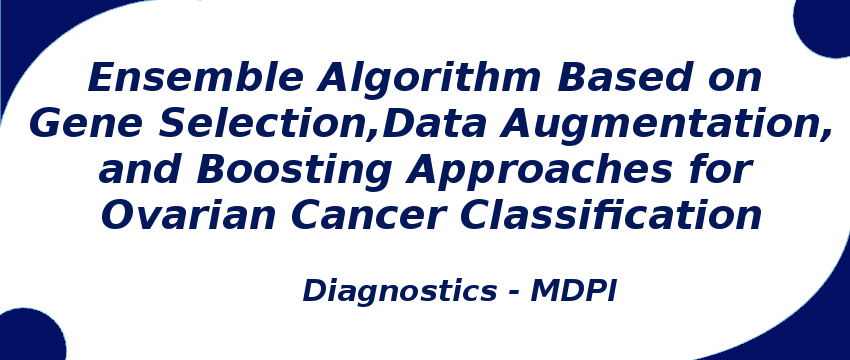Research Area: Machine Learning
Ovarian cancer is a difficult and lethal illness that requires early detection and precise classification for effective therapy. Microarray technology has permitted the simultaneous assessment of hundreds of genes’ expression levels, yielding important insights into the molecular pathways driving ovarian cancer. To reduce computational complexity and improve accuracy, choosing the most likely differential genes to explain the impacts of ovarian cancer is necessary. Medical datasets, including those related to ovarian cancer, are often limited in size due to privacy concerns, data collection challenges, and the rarity of certain conditions. Data augmentation allows researchers to expand the dataset, providing a larger and more diverse set of examples for model training. Recent advances in machine learning and bioinformatics have shown promise in improving ovarian cancer classification based on gene information. Methods: In this paper, we present an ensemble algorithm based on gene selection, data augmentation, and boosting approaches for ovarian cancer classification. In the proposed approach, the initial genetic data were first subjected to feature selection. Results: The target genes were screened and combined with data augmentation and ensemble boosting algorithms. From the results, the chosen ten genes could accurately classify ovarian cancer at 98.21%. Conclusions: We further show that the proposed algorithm based on clustering approaches is effective for real-world ovarian cancer data, with 100% accuracy and strong performance in distinguishing between distinct ovarian cancer subtypes. The proposed algorithm may help doctors identify ovarian cancer patients early and develop individualized treatment plans.
Keywords:
Author(s) Name: Jing-Xun Cai,Liang-Hung Wang and Ming-Ren Yang
Journal name: Diagnostics
Conferrence name:
Publisher name: MDPI
DOI: 10.3390/diagnostics14242772
Volume Information: Volume 14
Paper Link: https://www.mdpi.com/2075-4418/14/24/2772
